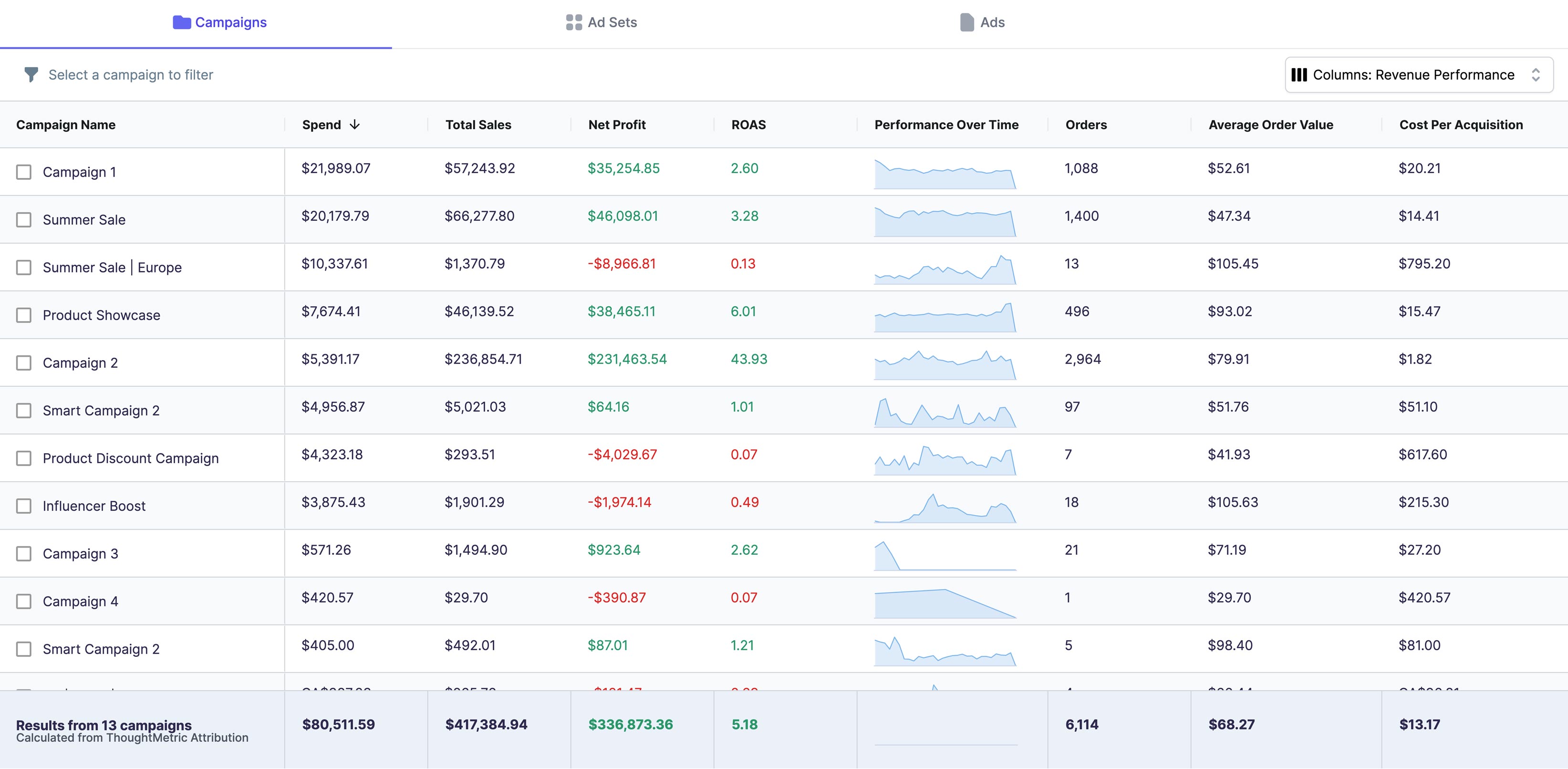Attribution models and analytics platforms do a lot of heavy lifting, but even the smartest tracking cannot capture everything.
Why Post-Purchase Surveys Matter
When a customer completes an order, it is the perfect time to ask them what influenced their purchase. A simple question “How did you hear about us?” fills in the blanks that pixels and UTMs cannot.
1. Capture the untrackable
Word of mouth, podcasts, influencers, or community mentions often go untracked by digital analytics. A post-purchase survey surfaces those hidden drivers of awareness that data alone cannot see.
If your analytics say Meta drove the conversion but the customer says “I saw someone talk about you on TikTok,” that is a sign your tracking may be over-crediting one channel. Surveys help verify what is truly influencing behavior.
How ThoughtMetric Combines Surveys with Multi-Touch Attribution
Most brands use either self-reported survey data or attribution data. ThoughtMetric brings both together in one place.
For example:
If 30% of customers say they heard about you on TikTok, but your attribution data shows only 10% of conversions credited to TikTok ads, you instantly know TikTok is playing a bigger awareness role than tracking can measure.
Want to Learn More About How ThoughtMetric Unifies Survey Data With Attribution?
FAQs
How does the post-purchase survey work?
After checkout, customers are prompted with a simple survey asking how they heard about your brand. Their responses are tied to attribution data, giving you a unique blend of self-reported and behavioral insights.
The multi-touch model assigns value across multiple touchpoints in the customer journey, not just the first or last interaction. With ThoughtMetric, this model also incorporates survey responses to create a more accurate, human-informed view of what led to the purchase.
Not at all. ThoughtMetric offers five different attribution models, so you can choose the one that best fits your business goals. That said, we recommend the multi-touch model for the most complete picture.
Tracking data alone can miss key context, like word-of-mouth or offline influence. Survey responses fill in those gaps, making your attribution more complete and reliable, especially when layered into a multi-touch model.

.png)



.png)